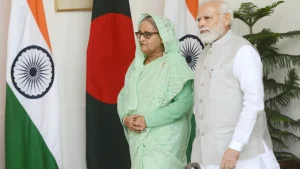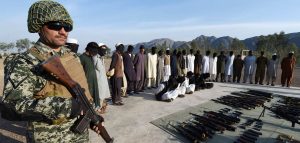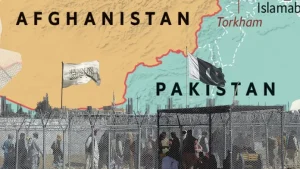Executive Summary
While Pakistan has no history of direct conflict with Israel, recent geopolitical developments have placed Israel within Islamabad’s evolving threat perceptions. These developments, such as strengthening of Israel’s strategic partnership with India, its involvement in Balochistan unrest, and its possible role in the Iran–Pakistan border security environment, have created a complex security picture. There is a strong perception that Israel now indirectly influences Pakistan’s security environment. Managing this challenge will require calibrated diplomacy, internal stabilization measures in Balochistan, and pragmatic engagement with regional stakeholders.
Background
Since their establishment in 1947 and 1948 respectively, Pakistan and Israel have had no diplomatic relations. Pakistan’s policy has remained closely tied to the resolution of the Palestinian question. Historically, bilateral contact was minimal and limited to occasional public statements and engagements in multilateral settings.
The post-1992 normalization of India–Israel ties marked a significant shift, with cooperation expanding in defence technology, counterterrorism, and intelligence sharing. This evolving relationship has increasingly intersected with Pakistan’s security concerns, particularly during periods of heightened India–Pakistan tensions.
Statements by Israeli leaders, most notably Prime Minister Benjamin Netanyahu’s January 2018 reference to a security “understanding” with India, have reinforced Pakistani apprehensions about the growing Israeli strategic intrusion. The 2025 India–Pakistan crisis, during which Israeli-origin systems were reportedly used in Indian cross-LoC strikes, provided a practical manifestation of that security arrangement. Such developments constitute clear evidence of an “India–Israel nexus” with significant strategic implications for South Asia. This time, unlike the reticence shown in 2018, Netanyahu on August 8 openly acknowledged the defence cooperation between the two countries, including the provision of weapons used in Operation Sindoor against Pakistan.
The Balochistan Dimension
Balochistan’s strategic location at the junction of Iran, Afghanistan, and the Arabian Sea makes it pivotal to Pakistan’s security framework. It serves as the linchpin of the China–Pakistan Economic Corridor (CPEC) while also being the venue of an ongoing separatist insurgency.
Recent initiatives by Israeli-linked entities such as the Middle East Media Research Institute (MEMRI) have drawn scrutiny in Pakistan. MEMRI has launched a “Balochistan Studies Project” and released materials perceived locally as provocative, including the Charter of Independent Balochistan authored by Hyrbyair Marri, as well as a separate report calling for regime change in Iran.
Such activities are viewed as attempts to promote a “unified and independent Balochistan” spanning both Pakistani and Iranian territories. Some separatist groups have already begun adopting this narrative. The Hyrbyair Marri–led faction of the Baloch Liberation Army (BLA-A), which broke away from the main BLA in 2018, has limited influence on the ground but is increasingly amplified by foreign actors with strategic agendas. Meanwhile, a faction of the Baloch Nationalist Army (BNA) has also carried out cross-border attacks and echoes this expanded nationalist rhetoric.
These developments suggest that external actors are exploiting local grievances by providing resources and shaping separatist messaging to further broader regional objectives. In Pakistan’s security assessments, a destabilized Balochistan offers strategic value to both India and Israel. For Israel, the province’s proximity to Iran positions it as a potential platform for intelligence operations or proxy violence. This threat perception is further reinforced by the presence of cross-border militant networks, entrenched human smuggling routes, and the growing reach and impact of separatist narratives through digital media.
Iran–Pakistan Border Security and the Israel Factor
The 900-kilometer Iran–Pakistan border traverses underdeveloped and restive regions on both sides — Sistan-Balochistan in Iran and Pakistan’s Balochistan. These areas face overlapping challenges, such as economic marginalization, porous borders, and insurgent violence. Militant actors operating in the region include Baloch separatists as well as transnational jihadist entities, such as the Islamic State Khorasan Province (ISKP), which has staged high-profile attacks regionally.
Baloch separatists in the past maintained a non-aggression pact with ISKP and local sectarian group Lashkar-e-Jhangvi, but recent reports suggest that this cooperation has ended. The resumption of this collaboration, however, cannot be ruled out.
The 2025 Israeli strikes on Iran deepened Pakistan’s apprehensions, given the proximity of Balochistan to Iranian territory and the potential risk of conflict spillover. Israeli technical assistance to India in unmanned systems operations during the May conflict between the two nuclear arch-rival neighbours demonstrated that Israeli capabilities could be leveraged against Pakistan in the future.
Perception versus Capability
It is important to differentiate between perception-driven threat narratives and demonstrable capabilities. Israeli defence exports to India are commercially motivated, yet the depth of political and military cooperation lends such transactions a strategic dimension. Similarly, although the MEMRI Balochistan Studies Project may be primarily a research initiative, but its association with Israeli-linked figures fuels suspicion.
Policy Implications
Domestic Stabilization in Balochistan: The government should strengthen governance, promote economic inclusion, and address ethnic grievances to reduce vulnerabilities to external manipulation.
Intelligence and Counter-Influence Measures: The security agencies must enhance monitoring of external propaganda and separatist networks, particularly on digital platforms.
Regional Border Management: The government should deepen Iran–Pakistan cooperation on joint patrolling, intelligence exchange, and counter-smuggling operations to mitigate militant mobility.
Discreet Diplomatic Channels: The government should communicate security red lines to Israel through indirect means while maintaining a credible deterrence posture.
Conclusion
Israel’s close partnership with India, its links to unrest in Balochistan, and its demonstrated operational reach in the broader Iran–Pakistan border region position it as a significant threat in Pakistan’s security landscape. The central task for Islamabad, therefore, is to safeguard internal security from external manipulation.
Achieving this requires a calibrated combination of domestic resilience, targeted regional security cooperation, and discreet diplomatic engagement with relevant countries in the neighbourhood. The evolving geopolitical context particularly calls for an updated Iran–Pakistan border security framework. This moment presents both a pressing challenge and a strategic opening for the two countries to deepen collaboration, address shared security threats, and improve the livelihoods of communities along their long and volatile frontier.
Annex A – Potential Israeli Capabilities Relevant to South Asia and Balochistan
| Category | System / Capability | Description / Potential Use Against Pakistan |
| Unmanned Aerial Systems (UAS) | IAI Harop Loitering Munition | Autonomous drone for radar strikes; deployed by India in 2025 conflict. |
| Heron TP & Heron 1 UAVs | Long-endurance reconnaissance with satellite links; maritime and cross-border surveillance. | |
| Searcher Mk II UAVs | Tactical ISR drones for short-range border monitoring. | |
| Precision-Guided Munitions (PGMs) | SPICE Guidance Kits | Convert unguided bombs into precision weapons; used in 2019 Balakot strikes. |
| Crystal Maze Missiles | Air-to-surface standoff weapons for Mirage 2000 aircraft. | |
| Electronic Warfare & Surveillance | EL/W-2090 Phalcon AWACS | Wide-area radar coverage for early warning and battle management. |
| EL/M-2248 MF-STAR Radars | Naval radars with long-range tracking, integrated into Indian warships. | |
| Covert Influence Channels | Information Operations | Amplification of separatist narratives through think tanks and advocacy groups. |
| Strategic Partnerships | Messaging alignment between Baloch separatists and pro-Israel outlets. | |
| Technical Reach | Long-Range UAV Operations | Proven penetration into Iranian airspace; feasible over Pakistani Balochistan. |
| SIGINT Integration | Possible integration with Indian coastal/airborne platforms for Makran coverage. | |
| Satellite Surveillance | Ofeq & EROS satellites; imagery potentially shared with India. | |
| Areas of Convergence with India | Joint Training | Indian special forces trained by Israelis; tactics transferable to Pakistan context. |
| Technology Transfer | Israeli UAVs adapted for Indian use in high-altitude/desert conditions. | |
| Risk Assessment | Short Term | Israeli tech used in Indian strikes; narrative penetration in Balochistan. |
| Medium Term | ISR coverage over Gwadar/CPEC; deeper separatist narrative embedding. | |
| Long Term | Institutionalised India–Israel defence industry collaboration. |
Annex B – Threat Scenario Matrix
| Scenario | Description | Potential Impact |
| Narrative Shaping | Foreign media, research, and diaspora campaigns promote separatist causes. | Internationalisation of Balochistan issue. |
| Indian Use of Israeli Drones | Surveillance along western Pakistan, especially Makran coast. | Maritime and border ISR vulnerability. |
| Precision Strikes | Cross-border attacks with Israeli loitering munitions. | Targeted damage to defence/logistics sites. |
| Separatist Network Support | Funding and technical aid to diaspora groups. | Enhanced propaganda reach. |
| Operatives via Smuggling Routes | Movement of militants disguised as migrants. | Border security breaches. |
| Spillover from Israel–Iran Conflict | Disruption of fuel supplies, refugee influx, militant movement. | Resource strain and instability. |
| Joint SIGINT Operations | India–Israel long-term surveillance over Gwadar/CPEC. | Strategic asset exposure. |
| Cyber Attacks | Targeting ports, energy, rail infrastructure. | Disruption of CPEC operations. |
| False Flag Operations | Staged incidents to provoke Pakistan–Iran tension. | Diplomatic and security crisis. |
| Foreign UAV Reconnaissance | Unmarked drone flights over Balochistan. | Testing of air defence readiness. |
















